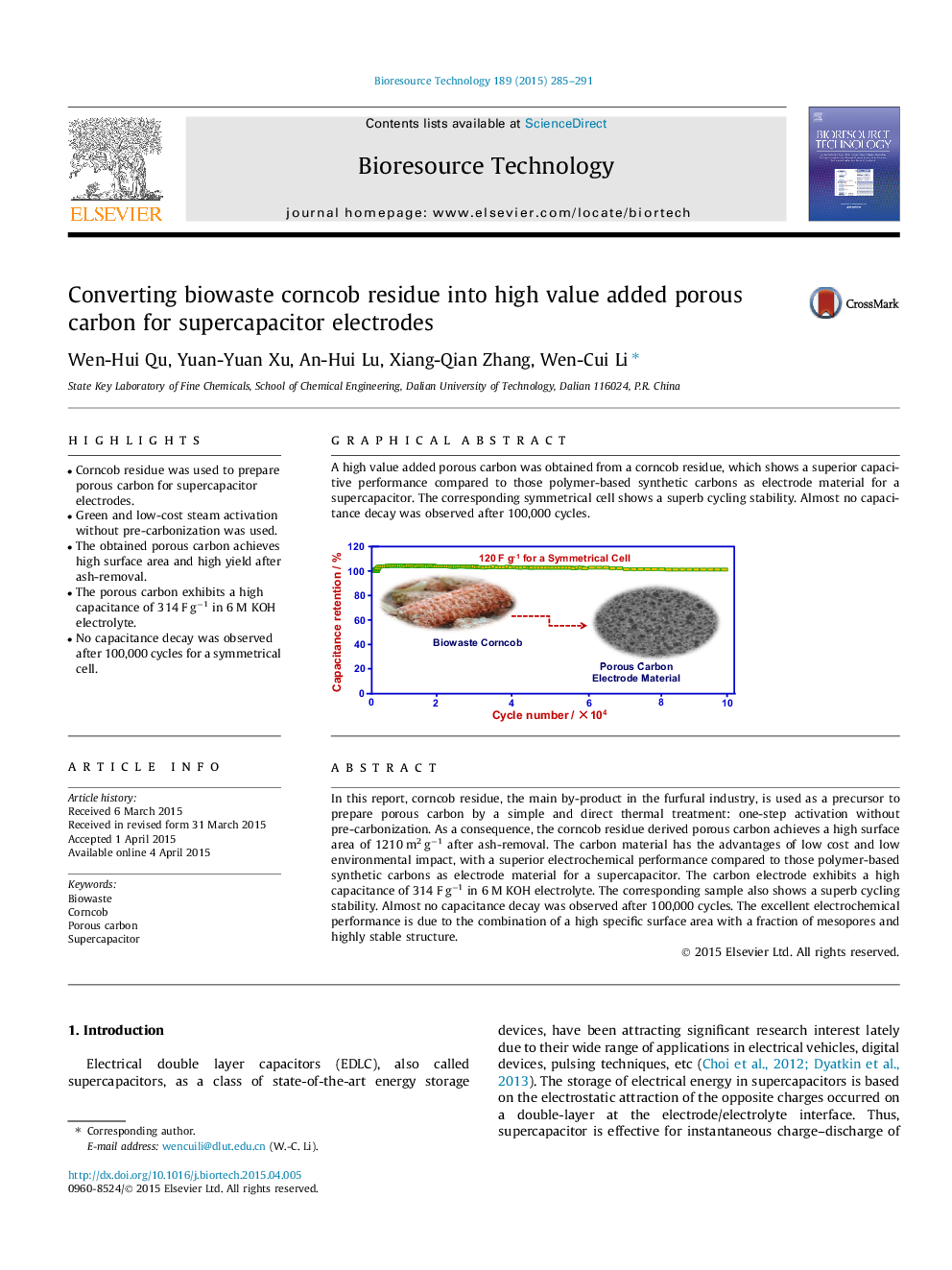| کد مقاله | کد نشریه | سال انتشار | مقاله انگلیسی | نسخه تمام متن |
|---|---|---|---|---|
| 679789 | 1459954 | 2015 | 7 صفحه PDF | دانلود رایگان |
• Corncob residue was used to prepare porous carbon for supercapacitor electrodes.
• Green and low-cost steam activation without pre-carbonization was used.
• The obtained porous carbon achieves high surface area and high yield after ash-removal.
• The porous carbon exhibits a high capacitance of 314 F g−1 in 6 M KOH electrolyte.
• No capacitance decay was observed after 100,000 cycles for a symmetrical cell.
In this report, corncob residue, the main by-product in the furfural industry, is used as a precursor to prepare porous carbon by a simple and direct thermal treatment: one-step activation without pre-carbonization. As a consequence, the corncob residue derived porous carbon achieves a high surface area of 1210 m2 g−1 after ash-removal. The carbon material has the advantages of low cost and low environmental impact, with a superior electrochemical performance compared to those polymer-based synthetic carbons as electrode material for a supercapacitor. The carbon electrode exhibits a high capacitance of 314 F g−1 in 6 M KOH electrolyte. The corresponding sample also shows a superb cycling stability. Almost no capacitance decay was observed after 100,000 cycles. The excellent electrochemical performance is due to the combination of a high specific surface area with a fraction of mesopores and highly stable structure.
A high value added porous carbon was obtained from a corncob residue, which shows a superior capacitive performance compared to those polymer-based synthetic carbons as electrode material for a supercapacitor. The corresponding symmetrical cell shows a superb cycling stability. Almost no capacitance decay was observed after 100,000 cycles.Figure optionsDownload as PowerPoint slide
Journal: Bioresource Technology - Volume 189, August 2015, Pages 285–291
